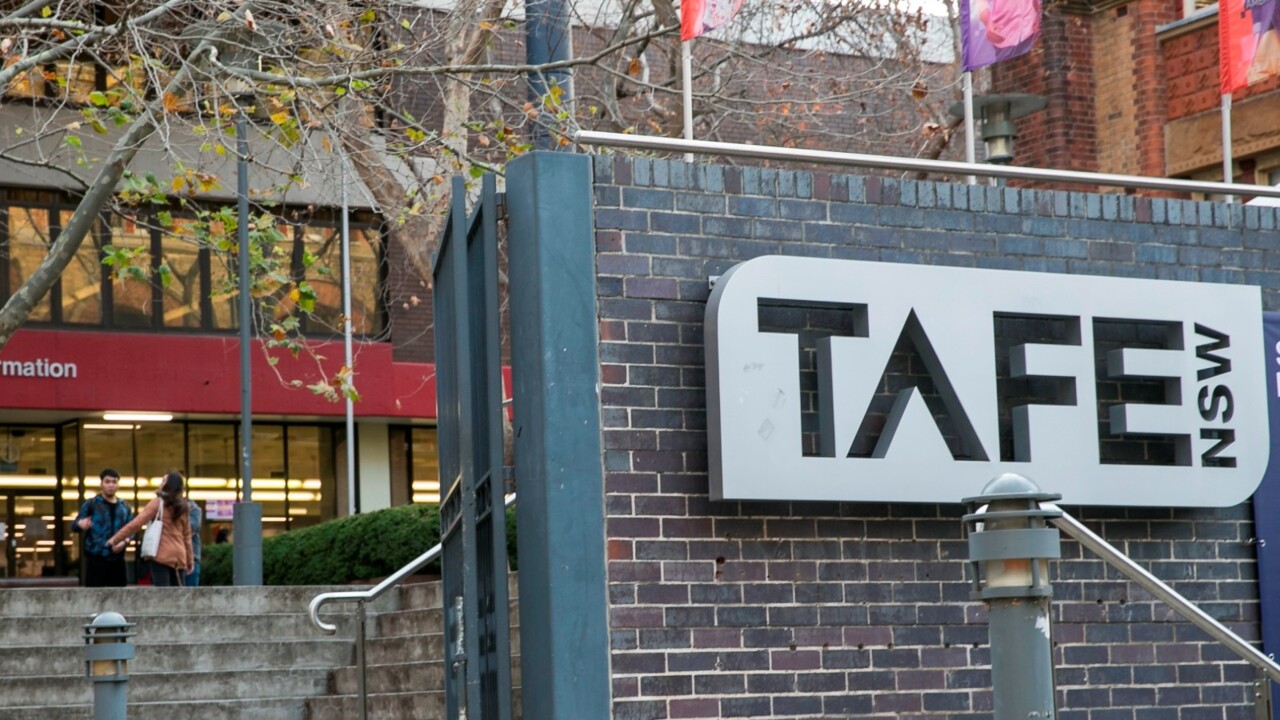Apprentice wages must rise or energy transition will fall flat, Labor warned
Labor’s key investment into readying the workforce for the clean energy transition will fall short unless it also increases the wages of apprentices, according to a powerful union.

Labor’s key investment into readying the workforce for the clean energy transition will fall short unless it also increases the wages of apprentices, according to a powerful union.
As the government increases its support for battery, wind and solar projects to meet ambitious renewable and emission reduction targets, the Electrical Trade Union sounded alarm over the absence of necessary workers needed to achieve such goals.
“Workforce is going to become a limiter to us hitting out 2030 targets and 2050 targets,” ETU secretary Michael Wright said.
“We have 170,000 electricians today, by 2030 we’ll need an extra 32,000 on top of that.”
The completion rate for the 14,000 people entering electrical apprenticeships each year is sitting at 56 to 58 per cent – about 10 per cent lower than what it was a decade ago.
Mr Wright said even if commencement rates could be dramatically increased to make up for those not completing their apprenticeships, training centres were already “at capacity”.
“The only variable that’s really in play here is that completion rate,” he said.
“We’ve got apprentices quitting at the moment because they call up the boss and saying, ‘sorry, boss, I don’t have enough money to put petrol in my car’.
“Apprentices are one of the few classes of workers in Australia to get paid less than the minimum wage.”
While noting the government’s $100m investment over nine years to give apprentices training in key trades up to $10,000 of financial support, Mr Wright said more needed to be done.

So far, 1400 people have taken up the government’s “new energy apprenticeship” and $10,000 in financial support. Labor hopes the scheme will attract 10,000 over nine years.
Master Builders chief executive Denita Warn said about 47 per cent of technicians and trade workers were already in shortage, with the demand for a clean energy workforce due to exacerbate the crisis.
“Master Builders estimates we need over 480,000 new entrants to address these gaps by the end of 2026. This is more acute when it comes to our clean energy workforce which is predicted to increase by over 125 per cent,” she said.
“There are many factors that make an apprenticeship attractive including receiving a wage while undertaking formal studies and on-the-job training.”
Skills Minister Brendan O’Connor — who has acknowledged apprenticeship completion rates are “way too low” — said Labor was “starting from behind” because of inaction by the previous government on investing in vocational education and the clean energy transition.




To join the conversation, please log in. Don't have an account? Register
Join the conversation, you are commenting as Logout